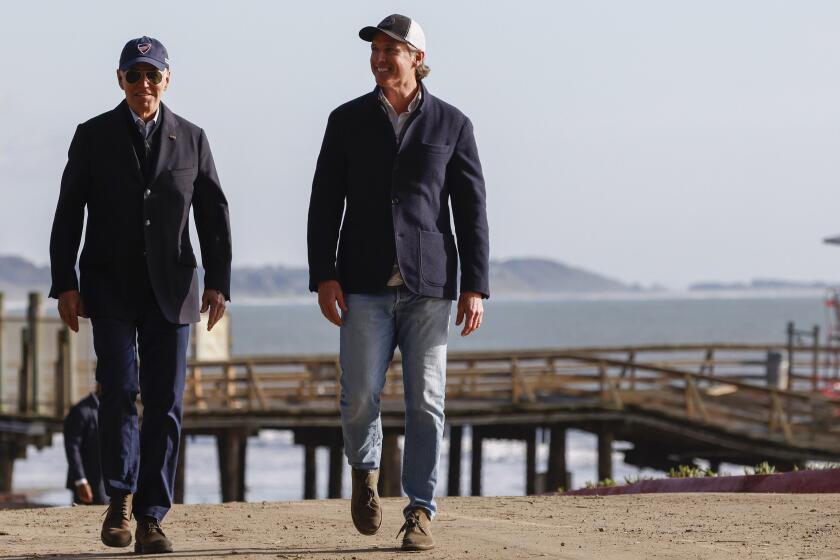Biden visits California to survey storm damage
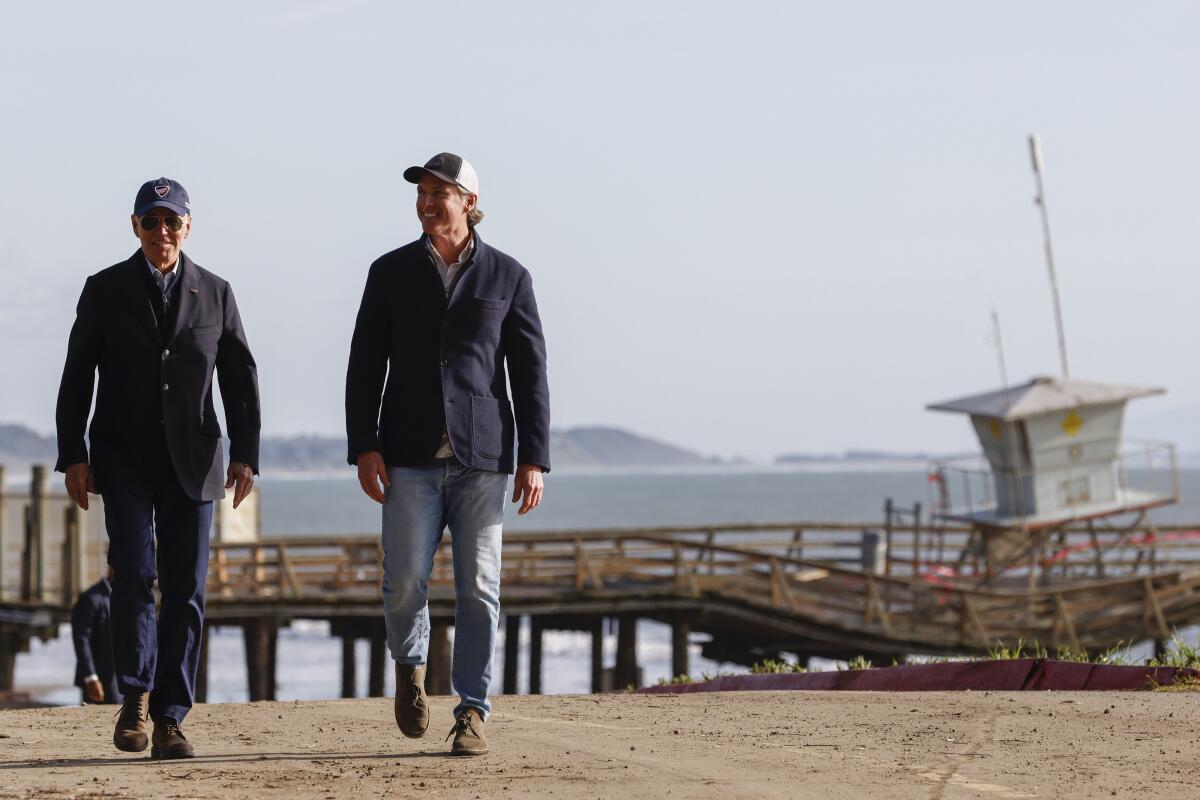
- Share via
MOUNTAIN VIEW — During a tour of the storm-ravaged Central Coast, President Biden vowed that federal assistance to rebuild California would not end until the job is complete.
Biden visited the state Thursday and joined Gov. Gavin Newsom and U.S. Sen. Alex Padilla in a helicopter to survey areas battered by winter storms that caused major flooding and landslides across the state.
The president walked along a broken boardwalk in Capitola and spoke with business owners about the estimated $1 billion in damage from the string of storms that started on Dec. 26 and led to at least 22 deaths.
“The federal government is not leaving its responsibility till it’s all fixed, it’s done,” Biden said in Aptos.
President Biden arrived in California on Thursday and joined Gov. Gavin Newsom and U.S. Sen.
The president traveled to the state after issuing an emergency declaration for California that authorizes the Federal Emergency Management Agency to coordinate disaster relief and offering federal aid for recovery efforts through a separate major disaster declaration in the six counties of Monterey, San Luis Obispo, Santa Barbara, Merced, Sacramento and Santa Cruz.
The governor praised the Biden administration for its support of California during and after atmospheric rivers pummeled the state. The storms ultimately dropped more than 17 inches of rain in San Francisco and 20 inches in the Santa Cruz Mountains.
It was San Francisco’s second-wettest three-week period since 1862.
“Trust me, that matters,” Newsom said of Biden’s support, adding that the president called him during the storms. “When you’re cynical, again, around government, relationships, where you feel like things are frayed, things have become too polarized, I hope you’ll consider these moments.”
Newsom said the collaboration between the state and federal government defines “the best of who we are.”
Biden’s visit and governor’s comments marked a break in the subtle political tension between the up-and-coming California governor and a president who has yet to publicly announce his plans to run for reelection in 2024.
Newsom made a national splash over the summer for criticizing Republican governors for criminalizing abortion, using immigrants as political pawns and restricting voting rights and at the same time needled Democratic leaders for not launching a stronger response.
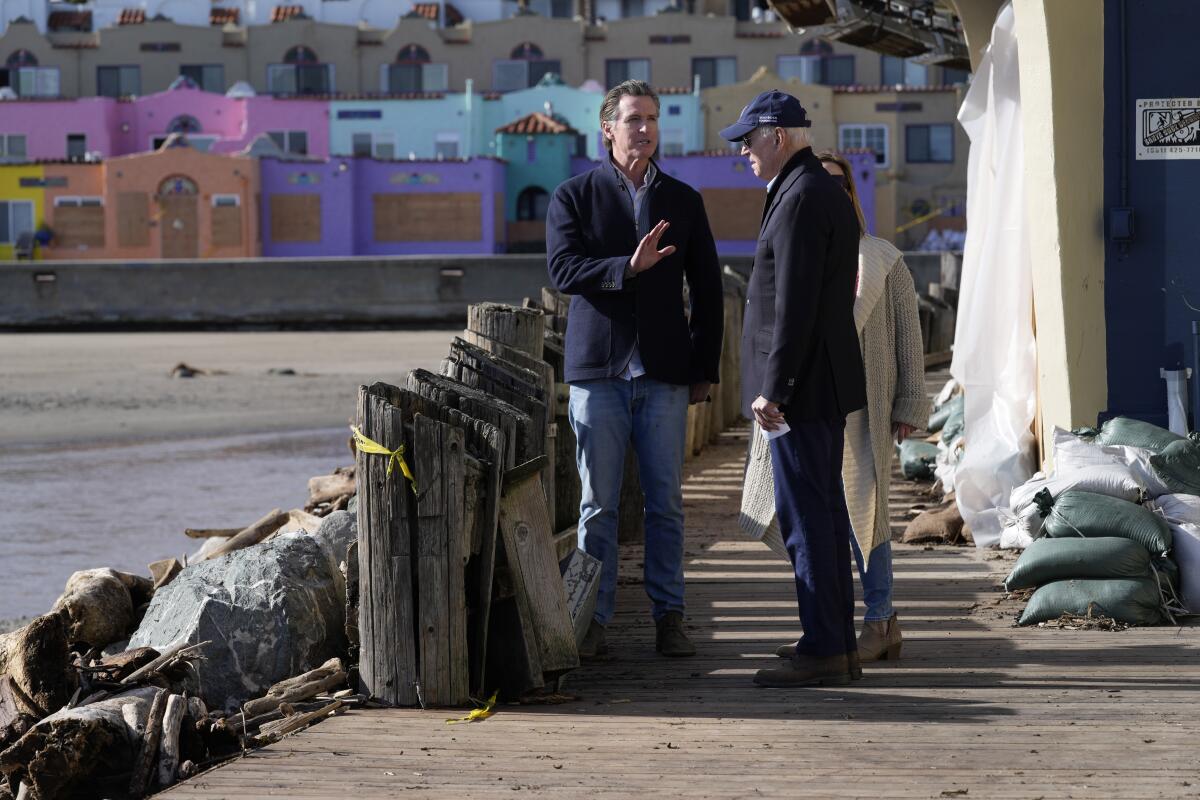
The governor was careful to later clarify that his comments were not directed at Biden, though he continued his campaign to implore his party to be more aggressive politically and repeatedly took swings at Florida Gov. Ron DeSantis, a potential GOP presidential candidate and, to a lesser extent, Gov. Greg Abbott of Texas.
Mike Madrid, a Republican political consultant, described Newsom’s actions as “natural jockeying” and “legitimate for a new generation to be not only poking at whether or not Biden’s going to be running, but really positioning if he weren’t going to be.” Though Biden has not made any official announcements, he is expected to run again. Newsom has repeatedly denied having any interest in running for president in 2024.
Newsom’s frustration with his own party resonated with rank-and-file Democrats, many of whom were angry over the Supreme Court decision to overturn the national right to abortion and were tired of the feeble response to attacks by the GOP.
“The more he sets himself as the tip of the spear, the more it helps his positioning as an heir apparent, or as somebody who’s going be viable nationally,” Madrid said. “I think what he’s doing tactically is right and helps Biden because what it does is it sets a contrast in the race with the extreme elements of the Republican Party.”
Biden has stepped up his own warnings to the country that American democracy remains in peril, singling out former President Trump and his supporters.
The president placed Newsom in a difficult position in September when he offered an unusual show of support for a bill approved by the California Legislature to make it easier for farmworkers to organize. The bill, known as the California Agricultural Labor Relations Voting Choice Act, was on Newsom’s desk and the governor had been grappling with whether to sign the legislation or not. His office had previously said that he didn’t support the bill language as the proposal moved through the Legislature.
Newsom ultimately signed the bill into law. Madrid called the president’s decision to support the farmworker bill a “pop on the snout” from Biden.
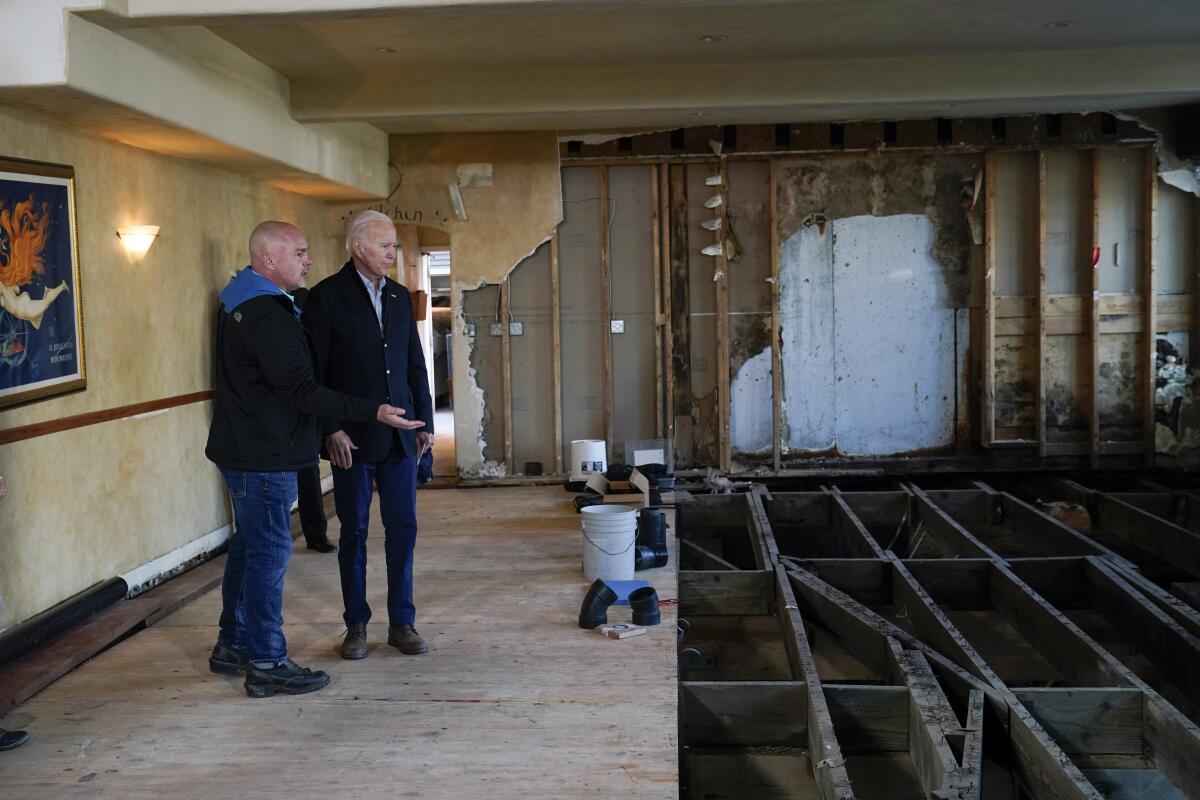
Months later, Newsom traveled to the Mexican border days after Biden came under fire from the GOP for visiting Arizona and not stopping at the border.
Newsom has never been afraid of pushing his party where he thinks it needs to go. Madrid pointed to Newsom’s support for gay marriage in 2004 and the resulting blame he received for John Kerry’s presidential loss as an example.
Biden touched down midday at Moffett Federal Airfield in Mountain View, where Newsom, Padilla and U.S. Rep. Anna G. Eshoo (D-Menlo Park) greeted him.
Shortly after noon, the president’s helicopter, and four others, rose over the airfield and turned southwest toward the mountains and coast to survey the damage.
The president met with business owners and local residents affected by the storms and flooding in Capitola and spoke with first responders and state and local officials about recovery efforts in Aptos.
Assembly Republican Leader James Gallagher of Yuba City encouraged the president and governor to prioritize infrastructure projects despite any environmental concerns.
“Newsom and Biden’s allies on the far left continue to throw up roadblocks to improving critical infrastructure,” he said in a statement. “Everything from fuels reduction projects that protect communities from wildfire to water storage get bogged down in red tape.
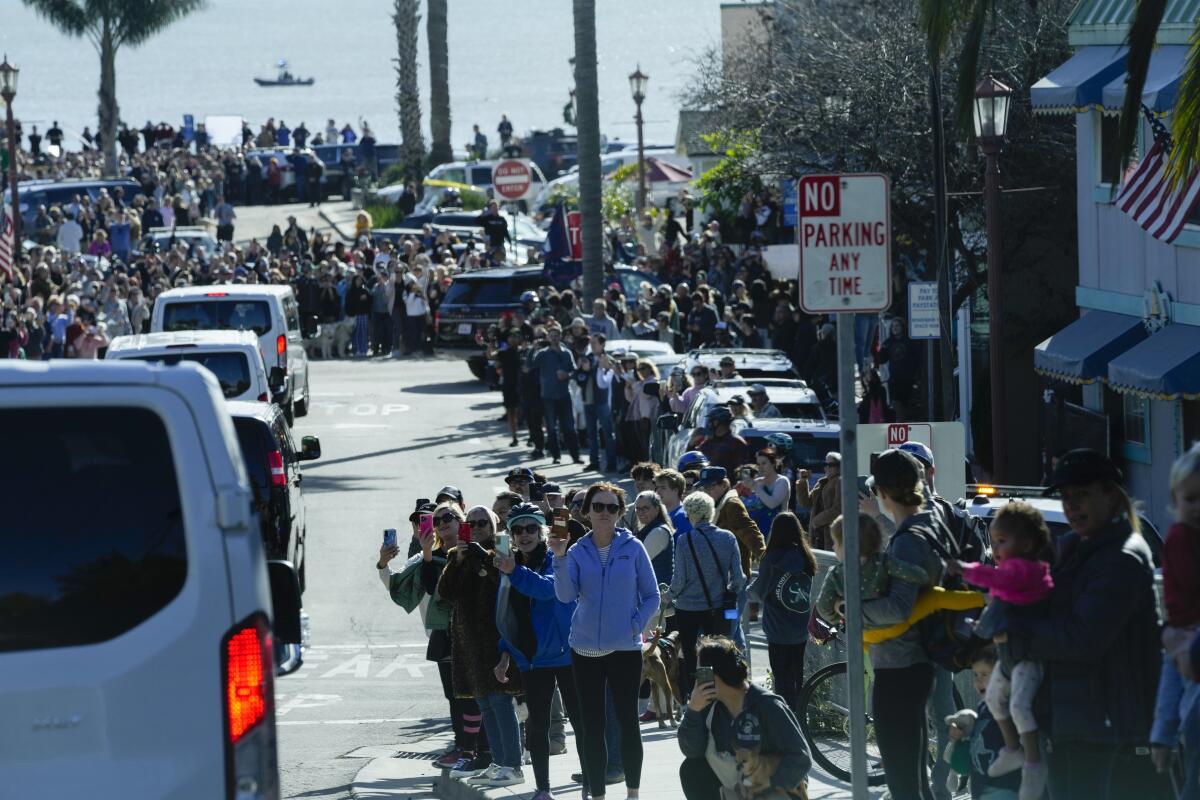
“This is a matter of safety.”
Along the California coast, cities such as Santa Cruz, Capitola and Fort Bragg were battered by storm surge, rain and wind. Iconic wharfs, restaurants, sidewalks and roads collapsed under towering surf, while streets, parks, homes and shops were flooded by powerful waves.
Meanwhile, rivers in Salinas, Merced and Sacramento counties swelled and spilled over their banks — turning farmland, whole city blocks and neighborhoods into lakes upon which first responders required jet skis, boats, kayaks and canoes to evacuate stranded Californians.
And in the coastal mountains, from the Bay Area south to Ventura, drought-stressed trees fell across roads and houses — isolating entire neighborhoods — while debris flows, mudslides and sinkholes blocked traffic and spurred dozens of evacuations. More than 500 landslides were recorded across California in the last few weeks.
Vice President Kamala Harris announced her plans to follow Biden’s visit with her own trip to Southern California on Friday to “focus on building resilience to floods and droughts.”
More to Read
Sign up for Essential California
The most important California stories and recommendations in your inbox every morning.
You may occasionally receive promotional content from the Los Angeles Times.
